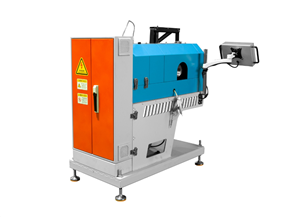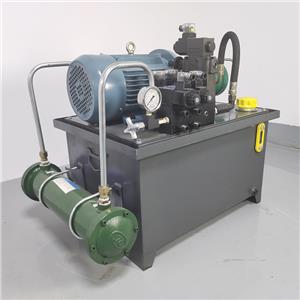Biaxially Oriented Film: A New Favorite Material with Excellent Performance(2)
Common Types: A Diverse Family of Characteristic Films
Biaxially Oriented Polypropylene Film (BOPP)
BOPP film is generally a multi-layer co-extruded film, produced by co-extruding polypropylene pellets into a sheet, followed by biaxial stretching in both longitudinal and transverse directions. It features excellent physical stability, mechanical strength, and airtightness, along with high transparency and gloss. Being tough and wear-resistant, it serves as a widely used printing film, typically with a thickness of 20–40 μm, among which 20 μm is the most common. However, BOPP film has poor heat-sealing properties, often used as the outer layer of composite films. When combined with polyethylene film, it exhibits superior moisture resistance, transparency, strength, stiffness, and printability, making it suitable for packaging dry foods. Due to its non-polar surface, high crystallinity, and low surface free energy, its printing performance is suboptimal. Therefore, surface treatment is usually required before printing and lamination.
Biaxially Oriented Polyester Film (BOPET)
BOPET film demonstrates excellent comprehensive properties, featuring high tensile strength, superior transparency, non-toxicity, outstanding barrier performance, and excellent electrical insulation. It is widely applied in diverse fields including electronics, electrical appliances, magnetic recording, packaging, decoration, plate-making printing, and photosensitive materials. Its water vapor transmission rate is extremely low, comparable to that of low-density polyethylene, while its permeability to air and odors is minimal, second only to polyamide. The film resists dilute acids and alkalis but is intolerant to concentrated ones, and can withstand most solvents, oils, and fats. With a light transmittance of up to 90%, the heat-set film ensures long-term usability within the temperature range of -70°C to 150°C and withstands short-term high temperatures, making it suitable for double-layer baked food packaging.
However, due to the inherent crystallinity of PET, additives must be incorporated during production, which slightly compromises BOPET's optical properties. To address this, isopropyl alcohol (IPA) can partially substitute for p-phthalic acid (PTA) in the co-polycondensation reaction, reducing the crystallinity of PET resin and thereby enhancing the optical performance after film stretching. Additionally, silica is commonly used as an antiblocking agent in BOPET films, as its refractive index closely matches that of PET, imposing minimal impact on the film's optical properties.
Biaxially Oriented Nylon Film (BOPA)
BOPA film serves as a critical raw material for manufacturing various composite packaging materials, emerging as the third-largest packaging material globally after BOPP film. With the advancement of the global economy and the acceleration of living rhythms, the demand for packaging materials for quick-service and frozen foods has surged. Meanwhile, traditional plastics struggle to meet the requirements of packaging material thinning, lightweight design, resource conservation, and recyclability. Additionally, the expansion of BOPA film applications in new domains—such as laundry detergent bags exceeding 2.5kg and electronic product packaging—has driven the continuous growth of global demand.
Application Fields: Wide Penetration into Various Industries
Biaxially oriented films play a key role in numerous industries by virtue of their excellent properties.
In the Packaging Industry
BOPP film, renowned as the "Queen of Packaging," is widely used for packaging foods, candies, cigarettes, tea, juices, milk, textiles, etc., owing to its excellent printability, high mechanical strength, and barrier properties. Its lightweight, non-toxic, odorless, and moisture-resistant characteristics make it a more popular packaging material than paper and polyvinyl chloride (PVC). Additionally, its simple and reliable manufacturing process along with reasonable cost contribute to its more widespread application compared to biaxially oriented polyester (BOPET) and biaxially oriented nylon (BOPA) films.
BOPET film, with its high strength, superior barrier performance, and good thermal stability, is frequently employed in packaging high-end foods, pharmaceuticals, electronic products, etc., effectively protecting product quality and extending shelf life. Thanks to its outstanding flexibility, puncture resistance, and barrier properties, BOPA film excels in packaging meats, cheeses, dried goods, and other foods, as well as electronic and daily chemical products.
In the Electronics Industry
Biaxially oriented films also hold an indispensable position in the electronics industry. For example, BOPET film, with its excellent insulating properties and dimensional stability, is used in manufacturing flexible circuit substrates, capacitor films, and other electronic components. It maintains stable performance in high-temperature environments, meeting the high-temperature resistance requirements of electronic devices.
In the Optical Field
Biaxially oriented films also shine in the optical field. Films with high light transmittance and low haze are used to produce optical devices such as liquid crystal display (LCD) optical films and polarizer protective films, providing strong support for enhancing the image quality and visual effects of display equipment.
As a significant achievement in materials science, biaxially oriented films inject strong impetus into the development of various industries with their unique properties and wide-ranging applications. With the continuous advancement of technology, the performance of biaxially oriented films will continue to be optimized, and their application fields will further expand, bringing more convenience and surprises to our lives.




